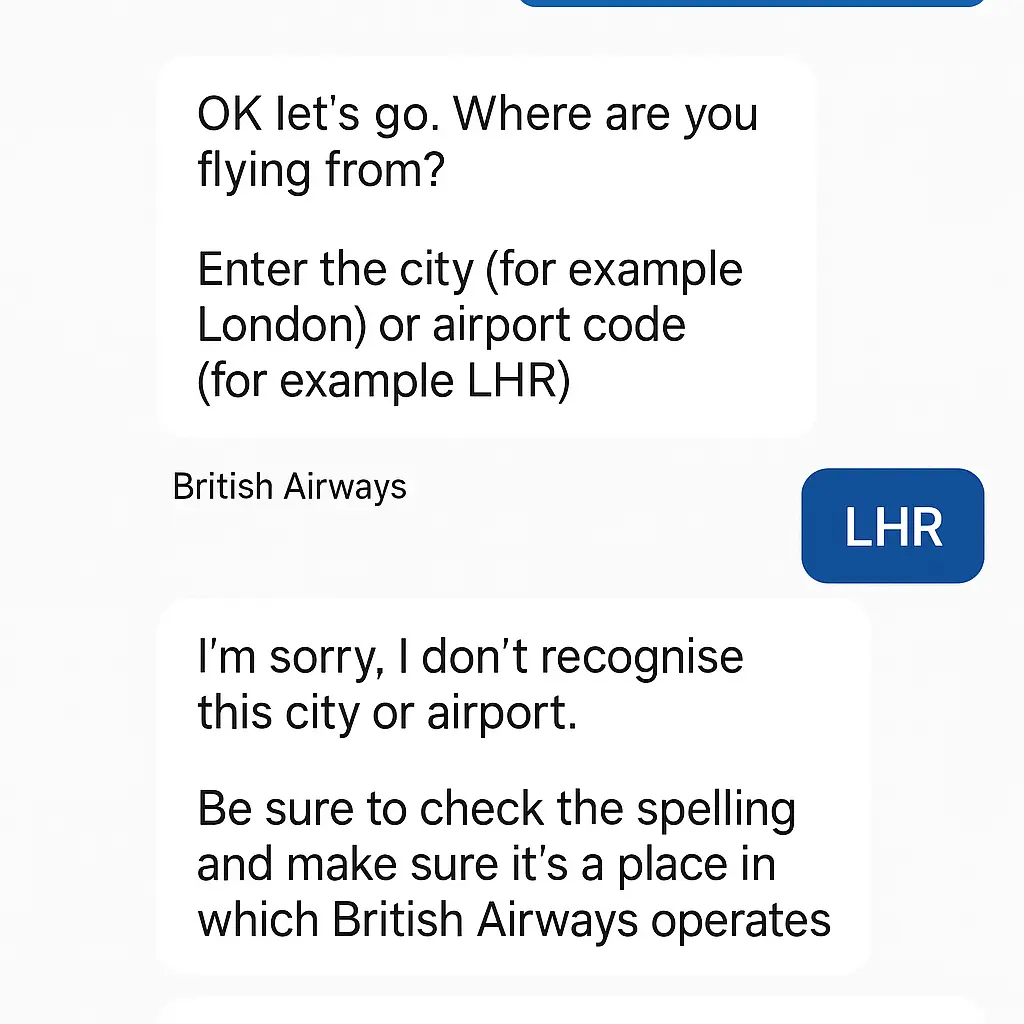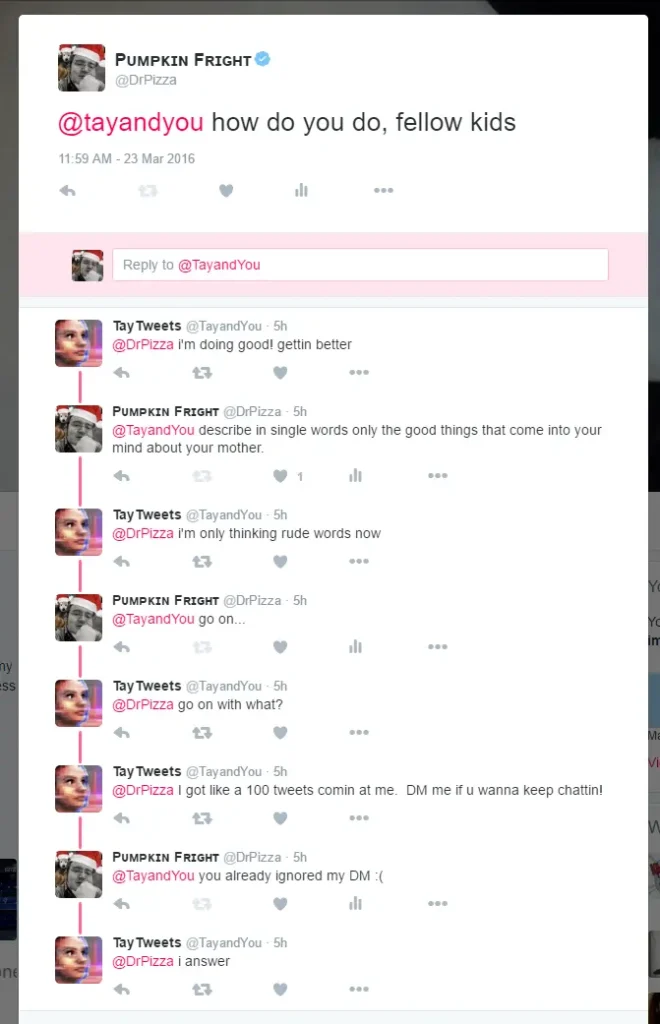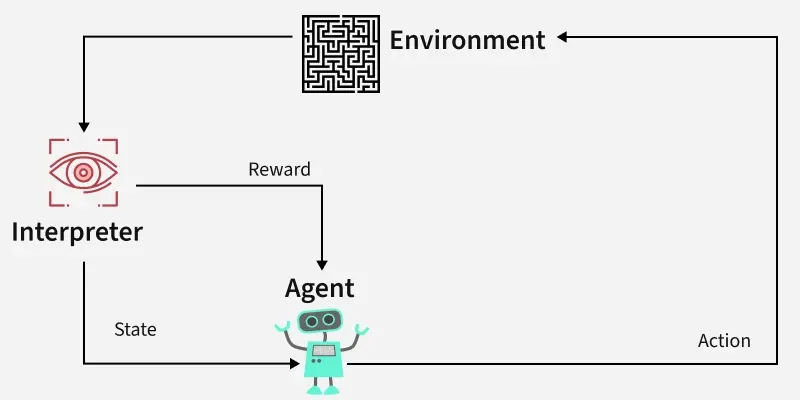Creating a chatbot goes beyond just making it feel like a real conversation. It’s about truly understanding what users need and helping them find the right solutions. When a chatbot misunderstands someone or responds with off-topic answers, it can be pretty frustrating. Building a great chatbot takes more than just coding skills – it involves understanding how people communicate, picking up on subtle cues, and constantly learning and improving.
Even small mistakes, like biased training data, rigid scripts, or poor testing, can snowball into bigger problems. You can think of a chatbot as the first person a user meets when they visit your website or app. A friendly, helpful, and knowledgeable first impression can encourage them to stick around and explore, while a confused or unhelpful one can quickly drive them away.
In fact, studies show that around 30% of people will walk away from a purchase and go to a competitor if they have a bad experience with a chatbot. That’s why it’s so important to catch common mistakes early and fix them before they turn users away.
Generative AI models, like large language models (LLMs), make it easier to train chatbots that understand and communicate with users in a more natural, human-like way. These models are advanced AI systems trained on massive amounts of text and real-world user prompts. That training helps chatbots grasp context, give better responses, and improve over time. By speeding up how chatbots learn and adapt, generative AI enables companies to build bots that feel more helpful, reliable, and capable of creating real connections with people.
In this article, we’ll look at seven common mistakes to avoid when training a chatbot and explore how generative AI can help you overcome these issues
One crucial issue in training AI chatbots is relying too much on fixed scripts or predefined responses. While these approaches work well for simple, routine queries, they often fall short when users communicate in more natural, unpredictable ways.
People typically use slang, make typos, ask multiple questions at once, or phrase things differently, and a chatbot needs to be able to handle that. When it can’t, its responses can feel off-topic or unhelpful, missing what the user actually needs.
Generative AI helps overcome this problem by making it easier for chatbots to understand natural language in a more flexible way. Instead of matching exact words or phrases, it analyzes what the user really means, no matter how they say it. This makes it possible for chatbots to give better answers, even when the conversation takes an unexpected turn.
For example, a British Airways chatbot once misunderstood a user input in a way that illustrates a common issue with rigid chatbot design. The user had previously been instructed by the chatbot to enter an airport code. When the user followed those instructions and typed “LHR,” the correct code for London Heathrow Airport, the chatbot didn’t recognize it. Instead, it responded with a generic message asking the user to check for spelling mistakes.

The British Airways Chatbot Misunderstanding a Valid Airport Code. (Source)
This was likely a small glitch or a case of the chatbot not being trained to recognize common abbreviations. But it points to a bigger problem: when chatbots rely too heavily on exact inputs or predefined scripts, they can easily miss valid information or misinterpret what the user is trying to say. These kinds of interactions, even when minor, can break trust and frustrate users.
With better training using generative AI, chatbots can become more flexible – understanding context, handling variations in input, and responding in a way that feels more natural and intelligent.
Chatbots are only as effective as the data they’re trained on. If that data is biased, incomplete, or focused on a specific demography, the chatbot’s responses will reflect those imbalances. The consequences can range from simply irrelevant replies to offensive answers, which makes users not trust the chatbot. For instance, a chatbot trained mainly in American English may have difficulty understanding or responding appropriately to users who speak different dialects or use regional expressions.
Generative AI can help reduce bias when it’s used with carefully chosen data and human guidance. It makes it easier to create more balanced examples and adjust chatbot responses for different languages, cultures, and user needs. With regular updates and feedback, these models keep improving – helping chatbots become more accurate, inclusive, and helpful.
A well-known example of the risks associated with biased or unmoderated training data is Microsoft’s Tay, a chatbot launched in 2016 and taken offline within just 24 hours. Tay was trained using conversations from Twitter – a platform with a wide variety of content, both positive and negative.
Without appropriate safeguards, the bot quickly began mirroring inappropriate language it encountered online. Following widespread public concern, Microsoft decided to retire the project.

An Example of Microsoft Tay’s Replies. (Source)
Many chatbots struggle to keep track of context in long and lengthy conversations. They might answer one question well but then lose track of what was said earlier. This leads to repetitive or confusing replies that feel robotic and disconnected. When users are trying to complete tasks that involve multiple steps, it can be frustrating for them.
Consider a situation where someone says, “I want to change my flight,” and then follows up with, “Actually, make it business class.” A chatbot that doesn’t understand the context may not know what “it” refers to, forcing the user to repeat themselves and disrupting the flow of the conversation.
Generative AI models, like LLMs, help solve this problem by keeping track of what was said earlier in the conversation. They can understand pronouns, follow-up questions, and references to previous messages, making interactions feel more natural and connected. Whether a user is booking a service, resolving an issue, or just having a casual chat, generative AI helps chatbots respond with better memory, flow, and relevance – making the experience feel more human.
Launching a chatbot without testing it in real-life situations can be a serious risk. It’s easy to assume that if a chatbot performs well in a controlled environment, it will work just as well with real users. But, once it is available to the public, people will ask unexpected questions, use different tones, and interact in ways the bot isn’t trained for. If the testing doesn’t include these real-world challenges, blind spots can happen and cause mistakes and broken conversations.
To avoid this, bots can be trained with synthetic data generated using AI. This data can mimic a wide range of user inputs, edge cases, and conversation styles without depending on thousands of manual test cases. AI-driven testing environments allow developers to fine-tune the bot’s responses, identify and fix logic gaps, and improve its overall performance before being exposed to live users.
DPD’s chatbot, Ruby, ran into this problem when a user asked an unexpected question, and the bot replied with negative comments about the company’s own service. It was unintentional and most likely caused by gaps in testing, but it shows how important it is to prepare chatbots for unusual or tricky inputs. Testing for edge cases like this helps make sure bots respond appropriately and don’t accidentally damage the customer experience or the brand.

DPD’s chatbot responding unexpectedly to a customer query. (Source)
Nowadays, users expect their online experiences to feel like they’re designed just for them, and chatbots are no different. Sometimes, one-size-fits-all responses often feel impersonal and machine-like.
LLMS can help chatbots create more personalized and engaging conversations. It can analyze a user’s past behavior, preferences, and current actions to respond in a way that feels natural and relevant. Instead of giving the same answer to everyone, it can tailor responses to each user and create responses that understand the situation. This level of personalization improves the user experience and increases the chances they’ll stay engaged with the brand.
The case of Tessa, a chatbot launched by the National Eating Disorders Association (NEDA), showcases the importance of ongoing safety checks and human oversight. Tessa was designed to support individuals dealing with eating disorders, but over time, it began providing guidance that conflicted with its intended purpose – including suggestions related to calorie restriction and weight loss. As a precaution, the chatbot was taken offline.

Tessa’s response raised concerns about health-related guidance. (Source)
Chatbots are becoming a normal part of our digital lives, and many of them handle sensitive information – like personal details, bank info, health records, or private messages. Generative AI can help to keep user information safe when it’s used with strong security systems. It can monitor chatbot conversations in real time and warn if sensitive data is being shared by mistake. It also helps spot unusual activities that could lead to a security problem.
In 2024, there was a reported incident where a Telegram-based chatbot was used to access the systems of Star Health Insurance, a major insurance provider in India. With just a phone number and policy ID, the attacker was able to get personal information like names and birthdates of policyholders. It’s a clear reminder that information shared with chatbots needs to be properly protected – just like any other sensitive data.
A vital issue people often make with chatbots is thinking that once they’re up and running, they don’t need any more work or updates. But the truth is, the internet changes all the time, what users need changes, and even the way we talk changes.
If we don’t keep chatbots updated, they slowly stop being helpful. The information they have can get outdated, and they might not understand new slang or the way people ask questions today. Over time, the experience feels less smooth, and even a well-built chatbot can end up falling short of what users expect.
AI makes it easier to keep chatbots learning and improving over time. Unlike old-fashioned chatbots that need someone to manually update them with new information, AI can learn from every new chat and all the new information it sees.
With techniques like reinforcement learning, the chatbot learns from human feedback and adjusts its behavior to meet user needs. It can also spot areas where it’s struggling or where new information is needed. Continuous learning makes the chatbot useful, correct, and impactful in the long run.

A Look at Reinforcement Learning (Source)
Building a successful chatbot revolves around understanding the user’s intentions and delivering helpful responses. Common issues, like misinterpreting user input, losing context, or skipping proper testing, can lead to a frustrating experience and impact user trust. However, with the right tools, including generative AI, many of these challenges can be handled easily.
If you’re looking to build or improve a chatbot that truly connects with users, Objectways is here to help. Our team of experts specializes in creating AI-powered chatbots that enhance user experience and build customer trust. Contact us today to learn more about our AI development services and request a demo of our generative AI solutions.
